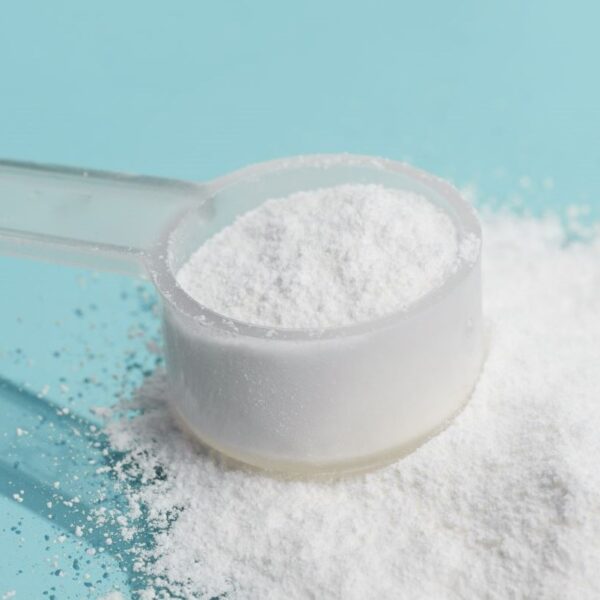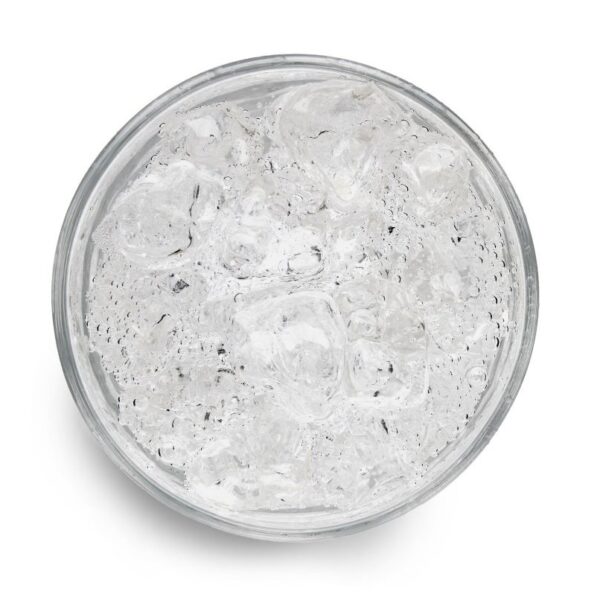Sodium hexametaphosphate (SHMP) is a common food additive used in a multitude of products, including dough, dairy products, packaged egg whites, canned milk, and processed seafood and meats. This article will focus on SHMP’s usage in the food industry.
What is Sodium Hexametaphosphate?
Sodium hexametaphosphate, is also referred to as:
- SHMP
- Graham’s Salt
- Sodium poly metaphosphate
- Hex
- Calgon
It is a synthetic chemical compound produced by reacting sodium phosphate with sodium hydroxide. Its chemical formula is (NaPO3)6. The structure of Sodium hexametaphosphate consists of six repeating NaPO3 units linked to each other. There is no natural source of SHMP.

Use of Sodium Hexametaphosphate in Food Products
Sodium hexametaphosphate is commonly used to adjust the attributes and functional properties of food products, including viscosity, solubility, and surface activity. Adding SHMP accomplishes its effects through changes in mineral balance, surface charge, and electrostatic interaction. Sodium hexametaphosphate is a strong calcium chelator with the ability to bind three calcium atoms per molecule. Here are several of the most popular uses of sodium hexametaphosphate:
- Sequestrant
- Emulsifier
- Stabilizer
- Texturizer
- pH regulator
- Dough conditioner
- Suspending agent
Typical Applications and Product Examples
Sodium hexametaphosphate is used as a food additive in processed foods such as canned goods, frozen foods, dairy products, and baked goods. The following table illustrates typical applications.
| Type/Examples | Functions |
|---|---|
| Convenience – Powdered Formulations | Dispersant Emulsifier Anti-caking Agent |
| Convenience – Noodles | Texturizer Dough Modifier |
| Bakery – Cakes, Bread | Texturizer Dough Modifier |
| Beverages – Juices, Flavored Beverages | Stabilizer Shelf life Enhancer Flavor Enhancer |
| Processed Meat & Seafood | Shelf life Enhancer |
| Starch – Modifying Agent | Modifying Agent |
| Dairy – Processed Cheese | Emulsifier pH Regulator Sequestrant |
Properties of Sodium Hexametaphosphate
| Molecular Weight | 611.77 g/mol |
| Melting Point | 616 ℃ (decomposition) |
| Density | 2.484 g/cm3 |
| Storage Temperature | Room temperature, Dry conditions |
| Solubility | Soluble in water, insoluble in organic solvents |
| Physical Form | Powder |
| Color | White to off-white |
| pH (1%) | 6.8 |
| Claims (*Product Specific) | Gluten Free, Halal*, Kosher* |
Typical Formulations
Milk Drink
Acidified milk drink prepared using yogurt and stabilized with pectin: The addition of SHMP to the product significantly improves the stability of the drink by boosting the electrostatic interactions and the formation of soluble protein-pectin complexes.
Here is an example of a milk drink formulation table with sodium hexametaphosphate along with the % weight of ingredients:
| Ingredient | % Composition |
|---|---|
| MSNF Yogurt | 2% |
| Sugar | 7.5% |
| Pectin | 0.42% |
| Water | Make up 100 |
| SHMP | 0.05% |
| Citric Acid | Adjust pH to 3.9 |
Noodles
Use of SHMP in noodle products affects the pasting properties of flour, the mixing properties of dough, and the quality of the finished noodles. It may also help in retaining color.
Here is an example of a noodle formulation table with sodium hexametaphosphate along with the % weight of ingredients:
| Ingredient | % Composition |
|---|---|
| Wheat Flour | 100% |
| Starch | 20-40% |
| Gluten | 5-15% |
| Fruit/Vegetable Powder | 1-10% |
| Gluten Fortifier | 0.1-0.3% |
| Synergist (SHMP+ Citric Acid) | 0.2-2.2% |
| Antioxidant | 0.02-0.64% |
| Water | 40-43% |
| Edible Salt | 1-3% |
Processed Cheese
SHMP is added to milk for the manufacturing of cottage cheese. The formulation is as follows. The pH of milk is set to 5.6 with lactic acid and sodium hydroxide. SHMP is added to the mixture at the dosage of 1.5-2.75%. The hardness of cheese increases with the dosage of SHMP, whereas the meltability decreases. Also, adding SHMP increases the curd yield and milk solid recovery in cheese making.
Sources: Journal of Dairy Science & Science Direct
Sodium Hexametaphosphate Formulation Considerations
Sodium hexametaphosphate’s properties create a variety of formulation implications. Here are several considerations when using sodium hexametaphosphate as a food additive.
Stability
SHMP is light and oxidation stable. It’s heat stable up to ~616°C.
Dosage
The optimal dosage of SHMP depends on the end product and the intended function. Generally, it ranges from 0.05 to 2% w/w basis.
Effects on Textural Properties of Food Products
When added to dough, sodium hexametaphosphate significantly changes the texture of the final product. It modifies the electrostatic environment of the dough, affecting gluten development and protein-starch interaction. Sodium hexametaphosphate can modify the texture of bread by helping retain moisture in the dough, making the bread soft and fluffy.
It can also act as an emulsifier, helping to suspend oil and water-based components within the dough, creating a smoother texture.
In noodle products, SHMP can help to keep the noodles from sticking together, making them easier to separate after cooking. In processed cheese, adding SHMP increases hardness and decreases meltability. This effect is attributable to a combination of enhanced casein dispersion, calcium ion chelation, and ion exchange.
Effects on Consistency
Sodium hexametaphosphate can act as an emulsifier, helping to suspend fat and proteins in milk, creating a continuous phase. It improves the emulsification properties of caseins by sequestering the calcium from the insoluble calcium-paracaseinate phosphate network present in natural cheese. In processed meats, SHMP restructures the proteins, making them more dispersible. In powdered formulations, it helps in preventing caking and maintains flow properties.
Effects on Sensory Properties
Sodium hexametaphosphate does not directly affect food flavor. However, improving the texture of food can, in turn, improve the flavor, and SHMP may help enhance other flavors present in food. Sodium hexametaphosphate helps to stabilize color and improve mouthfeel in fruit juice and beverages. It also improves water quality by chelating the metal ions, which make water hard.
Effects on Physicochemical Properties
The pH of a 1% solution of sodium hexametaphosphate is approximately 6.5. SHMP is a buffering agent that can help to maintain a stable pH level in food products, which can help to improve the texture, flavor, and color of the food product.
Sodium Hexametaphosphate Safety & Regulatory Considerations
Sodium hexametaphosphate is safe for use in food when limited to recommended amounts. It’s allowed as a food additive in the United States and the European Union. The food categories listed by FDA for its use are fruit jellies, frozen desserts, cheese & dressings. It has also been approved by the European Food Safety Authority (EFSA), Joint FAO/WHO Expert Committee on Food Additives (JECFA), and other authorities.
Identification Numbers
| CAS Number | 10124-56-8 |
| EC Number | 233-343-1 |
Fun Facts About Sodium Hexametaphosphate
- SHMP typically is differentiated by four characteristics: grade, chain length designation, P2O5 content, and particle size. SHMP is available in either food grade or technical grade.
- In industrial applications, including metallurgy and construction materials, sodium hexametaphosphate is used as a water softener, a dispersing agent, a thickening agent, and a sequestrant.
Additional Sources & Resources
- Food Additives – What is Sodium Hexametaphosphate (E452i) in Food
- Xingxin Bio – Sodium hexametaphosphate (SHMP)
- Science Direct – Effect of emulsifying salts on the physicochemical properties of processed cheese made from Mozzarella
- Cargill – Food Processing Salt Functionality Beyond Flavor
- MDPI – Use of Sodium Hexametaphosphate and Citric Acid Mixture as Depressant in the Flotation Separation of Scheelite from Calcite
- NIH – The effects of phosphate salts on the pasting, mixing and noodle-making performance of wheat flour
- Science Direct – Effect of phosphate salts on the Korean non-fried instant noodle quality
- Google Patents – Colored FD noodles and preparation method thereof
- Springer Open – Food additives and technologies used in Chinese traditional staple foods
- FDA – Food Additive Status
- Science Direct – Effect of sodium hexametaphosphate on heat-induced changes in micellar casein isolate solutions








